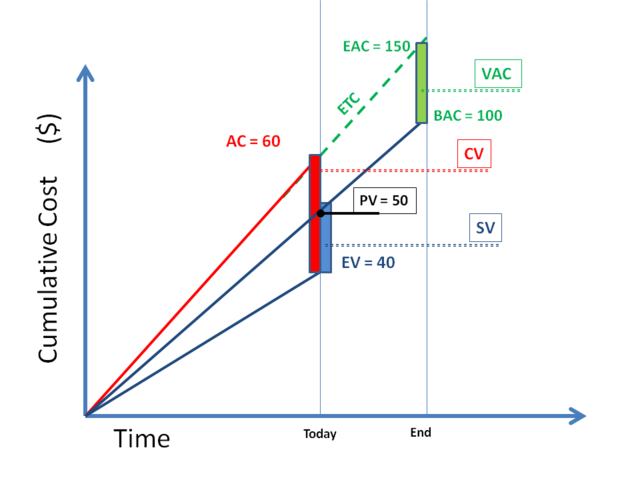BrainDumpage
This section contains most of the brain dump data as well as general reference material for the PMP.
(Again, 4th edition test only, for now...)
Advice when taking the test
Note: This is the list of
general suggestions for taking the PMI 4th edition test. All bets are off after the test is updated....
- For multi-paragraph questions, read the answers first - they usually indicate the context of the question (Are all of the answers about Quality? Risk? Scheduling?)
- Scan to the bottom of the question, see what they are asking - that will help you weed through all of the extraneous/unnecessary data at the top of the question.
- Use the "MARK" option - 200 questions seems like a lot. To keep from getting stuck/hung-up on one question, give them all your best answers. For those you aren't certain of, "MARK" the question and you can review it later (otherwise you may spend too much time on one question)
- Use your breaks - stay hydrated, stretch often. Watch your posture. We know it sounds silly but if you get hunched over the screen during the test, part of your brain will be distracted by pain that may not register but take away from your vital brain cycles :)
- Best estimates are 40% of the test is memorization, 7-10% is formula application - the rest is critical thought: reading the questions and applying (as opposed to regurgitating) your knowledge of the PMBOK.
- Write everything down, even the simple math. Adrenaline may be high, this is no time for a silly mistake. Doing math in your head robs you of the chance to visually see what you are working out. Remember, your eyes are good at catching simple mistakes - use them.
- For network diagramming questions, read the question before you dive into sketching/making the map - this will save you time and heartache. One of the more detailed diagrams simply asked how much float was on the critical path.... (Not a lot of diagramming needed there...)
- If you are unsure of an answer, just MARK it for review later. Questions later in the test may give you hints or remind you of something that will help when you go back to review your MARKed answers.
Formulas

There are a few key terms and formulas that you will need to have for the test.
CV = Cost Variance
SV = Schedule Variance
AC = Actual Costs
PV = Planned Value
==============
CV = EV - AC
SV = EV - PV
SPI = EV / PV
CPI = EV / AC
EAC = BAC / CPI
ETC = EAC - AC
VAC = BAC - EAC
TCPI = (BAC - EV) / (BAC - AC)
==============
PERT Estimates = D = (P + 4M + O) / 6
Communication Channels = (n(n-2)) / 2
Click the image for a larger picture
PMI Test Assumptions
Note: This is the list of general assumptions for the PMI 4th edition test. All bets are off after the test is updated....
- PMs are empowered and in control
- PMs always follow the PMBOK
- PMs are working large projects (+100 people, multi-national, long-term) and are there from beginning to end
- PMs but the best interests of the project ahead of themselves,(their careers) or even of their stakeholders
- PMs are operating within a Matrixed Organization
- PM's own the reserves (contingency, management) and are the managers of reserve (can release as they choose)
- PMO's exist and have authority over an organization's project
- Organizations retain all historical project information (work, costs, risks, OPAs, etc.)
- Critical Path - Assume Finish to Start Activities
- Critical Path - Assume "Total Float"
- Bar Charts assumed to not identify relationships between tasks
- Schedule compression is always part of the initial schedule development (prior to baselining)
- For earned value, burn rate is assumed to be linear based (flat line)
- A Project Management Plan is more than just a Gantt chart (documents "how" more than "what")
- Gold-plating (adding extra features/feature creep) is not supported / allowed
- You should assume you are the buyer unless specifically told otherwise
- You should assume you are the HR Supervisor (as opposed to the functional manager, ex: You don't need to budget for merit increases, etc.)
- PMI assumes the PM will exert Leadership (esp in conflict situations)
- PMI test assumes PM will have team-building exercises.
- Test assumes the project has multiple stakeholders.

